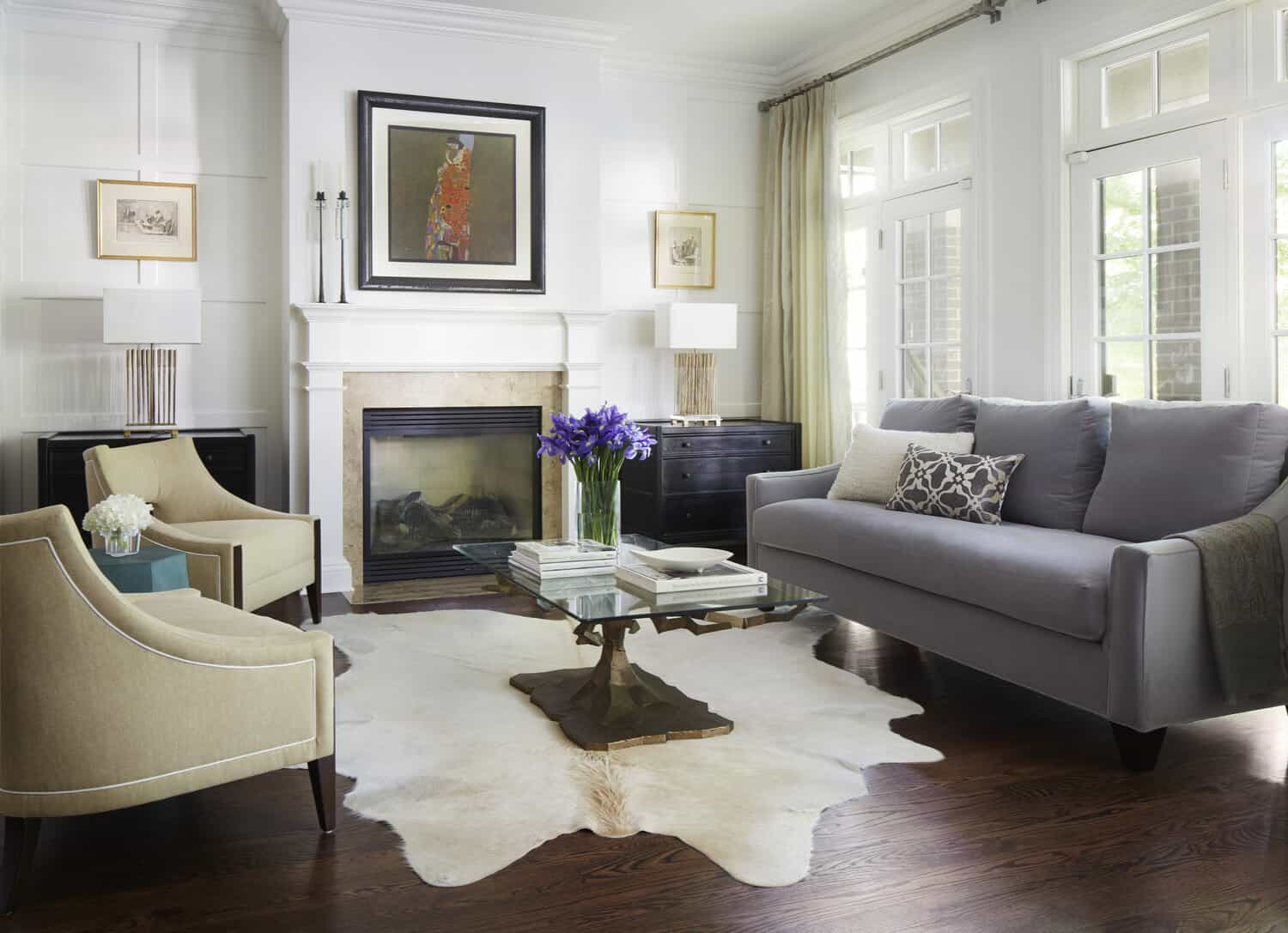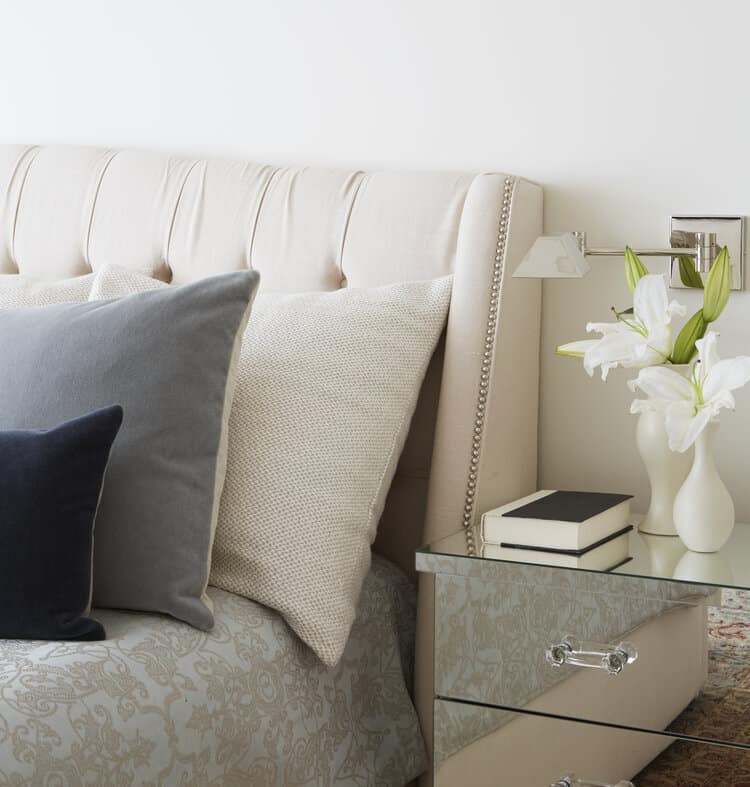
Let’s Talk Texture: Adding Warmth with Textiles

If there is one design element you can always spot in homes I design, it’s the layering of rich and varied textures. There is no better way to incorporate a sense of warmth and welcome while also elevating the design, creating eye-catching, yet perfectly balanced moments throughout the home.
Today, I am excited to share with you my go-to, favorite textiles and signature strategies for creating a perfectly imperfect, layered look. If you take a peek around your space and find the design feeling a bit lackluster, some strategically mixed textiles and other textural design elements can do wonders for creating the dimension and warmth you’re seeking.

Go-To Guide for Textiles
First things first, let’s talk textiles. Textiles have the wonderful ability to create not only the visual impression of warmth, but actual warmth and comfort. Below are a few of my favorite textiles — use one or all of these to add coziness, interest and a layer of luxe to your space.
-
Wool: Certainly a crowd favorite, wool adds unparalleled comfort and is so versatile, lending itself to a multitude of design purposes. One of my favorite ways to incorporate wool is through rugs, as it has a natural resistance to stains and soil thanks to the natural lanolin coating of the fibers, making it easy to clean, while also adding a rich grounding layer to the room. For smaller touches of wool, I love incorporating it as throw pillows and blankets.
-
Boucle: Beautiful boucle is the perfect textile to bring into your space during cooler months because of the heavy, tactile nature of the fabric. The texture adds incredible interest and dimension that is truly eye-catching. I love the unexpected pop it creates on chairs, or for a more subtle touch, it’s perfect for throw pillows. You can’t go wrong with this fabric — it instantly telegraphs warmth and comfort.
-
Mohair: Another perfect fabric for cozy sophistication is mohair. It is incredibly soft and the perfect material to snuggle up with on a chilly day. Not only is it incredibly soft, it also has a beautiful sheen that doesn’t crease, making it the perfect textile for much-loved, daily use furniture like sofas or sectionals. Its insulating properties also make it a great fall or winter fabric, adding tremendous warmth to your room.
-
Velvet: Lastly, velvet is an incredible choice for a statement piece that is sure to grab the eye. The fabric holds a rich hues beautifully, giving you the chance to play with color as well as texture. Velvet is created on a special loom that weaves a multitude of rich, thick fibers simultaneously to create a lush pile effect that is incredibly soft, which is why we describe things as “smooth like velvet.” This versatile fabric works perfectly on any piece of furniture.

Top Tips for Layering Texture
Of course, rich textural design details can be incorporated into the home in a multitude of ways, in addition to throw pillows and furniture fabric selections. Here are some of my go-to design strategies for purposeful contrast that creates a memorable and personalized design.
Mix materials for an added layer of dimension.
While mixing textiles is certainly one of my favorite ways to add dimension through texture, it is not the only way: glass, wood and metals are all made to be mixed throughout the home, creating beautiful dimension through contrast.
Some of my go-to combinations for striking variation are lucite and brass as well as wood against metal, mirror and glass. I love to explore the unexpected by playing with old and new, natural and industrial, and sleek and rigid to create textural intrigue that adds a beautiful high-design touch.
Explore unexpected ways to incorporate texture.
Another one of my favorite tips is to consider unique, unexpected ways to incorporate beautiful textures. For example, applying fabric on walls is such a fun way to add texture, pattern and color, and if you are hesitant to commit to wallpaper, this is a great alternative design solution. Fabric can be applied to walls with liquid starch and can easily be removed. This is also a great approach for renters to bring warmth into their space and make it feel like home.
Another unexpected way to add texture is through vintage textiles. Throughout my past travels, I would gather beautiful pillows and quilts from around the world that not only add design interest, but so much heart and soul. These one-of-a-kind pieces are perfect for layering and adding a unique, personalized statement.
To get your creative mind rolling, think about the spaces that are “just missing something” and consider all of your options from the floor to the ceiling for textural touches. Don’t be afraid to color outside the lines.
Create a design plan grounded in purpose.
Lastly, texture has the incredible power to change the ambiance and feeling of the room. Always keep the room’s purpose top of mind when considering which textiles and materials to bring into the space. For example, a family room made for gathering together after a long day should most likely be grounded in cozy textiles like wool, fleece or mohair, subtly contrasted with harder materials like wood or brass. However, an entertaining space might lean toward a more sophisticated feel and should be grounded in polished textiles like silk or linen.

amy kartheiser design
home
about
services
portfolio
press
contact
Copyright © 2025 Amy Kartheiser Design | Website design by the la.rue creative studio